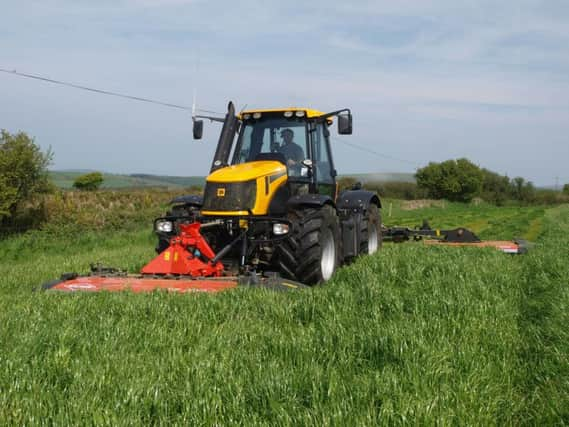Forage-based model makes sense


So said David Little of Germinal following a recent GB farming industry briefing, where all speakers agreed that high-yield, lower forage dairy farms don’t make financial sense, especially with milk prices so low. They advised that opportunities to improve production from forage within current set-ups exist for many, without major investment.
Quoting results from the Andersons Centre’s Friesian Farm model to compare systems, David Little said that a focus on quality silage allows significant cost reductions whilst maintaining relatively high yields, due to greater milk production from forage.
Advertisement
Advertisement
He advised that there are simple steps which can be taken to help boost silage quality this season and allow more milk producers to reap greater benefits from their cheapest natural feed source – grass.
“It is vital that silage leys contain the best quality ryegrasses,” said David, “but whatever the state of your swards going into this current season, there is still a lot that can be done to maximise the feed value of grass silage. Simply cutting at the optimum stage of growth can mean a difference of several D-value points, raising the ME of the silage and boosting the milk production potential. Aiming for quality not quantity will more than likely mean lower bought-in feed costs next winter.”
David added that improving the raw material would generate even better returns in future for a large majority of dairy farmers.
“We estimate current reseeding rates are less than 3% each year, which means many leys are being expected to perform well beyond the 8-10 years that we can expect sown species to remain, even under the very best management conditions. So in many cases, silage leys will contain large proportions of weed grasses, which yield less, are of lower quality, and do not respond as well to fertiliser as modern ryegrasses.
Advertisement
Advertisement
“Investing in more regular reseeding may seem like an added cost, which few will feel they can justify in the current climate, but the payback from grassland that is capable of delivering far higher yields of better quality, higher intake forage, will be achieved very quickly. Be sure you maximise the value of reseeding by selecting the best available varieties from the DARD Recommended List. Choose the best varieties for the purpose, and consider details like compatible heading dates within the mixture, as these small points can make a significant difference.
“The forage-based model should not be confused with the grass-based system. We recognise that the low input / low output extended grazing approach does not work for everyone, due to factors like soil type, farm layout or having the finance to convert, but the forage based system offers a strong mid-way solution,” he concluded.